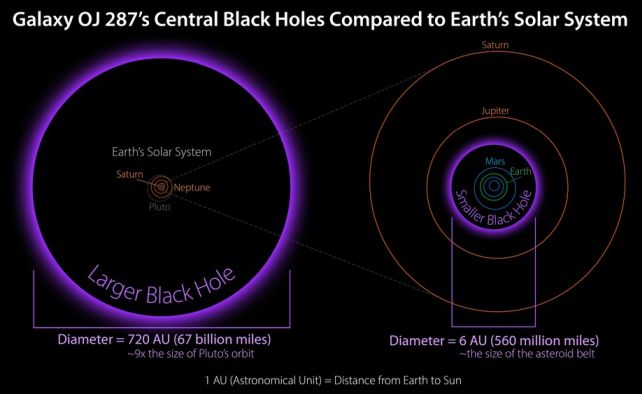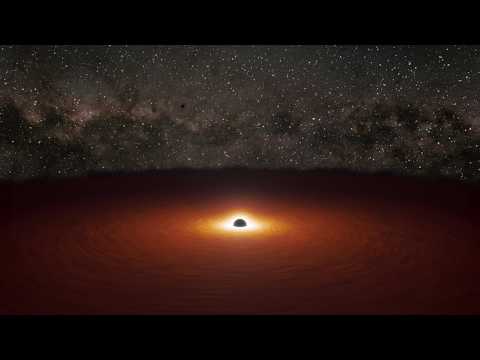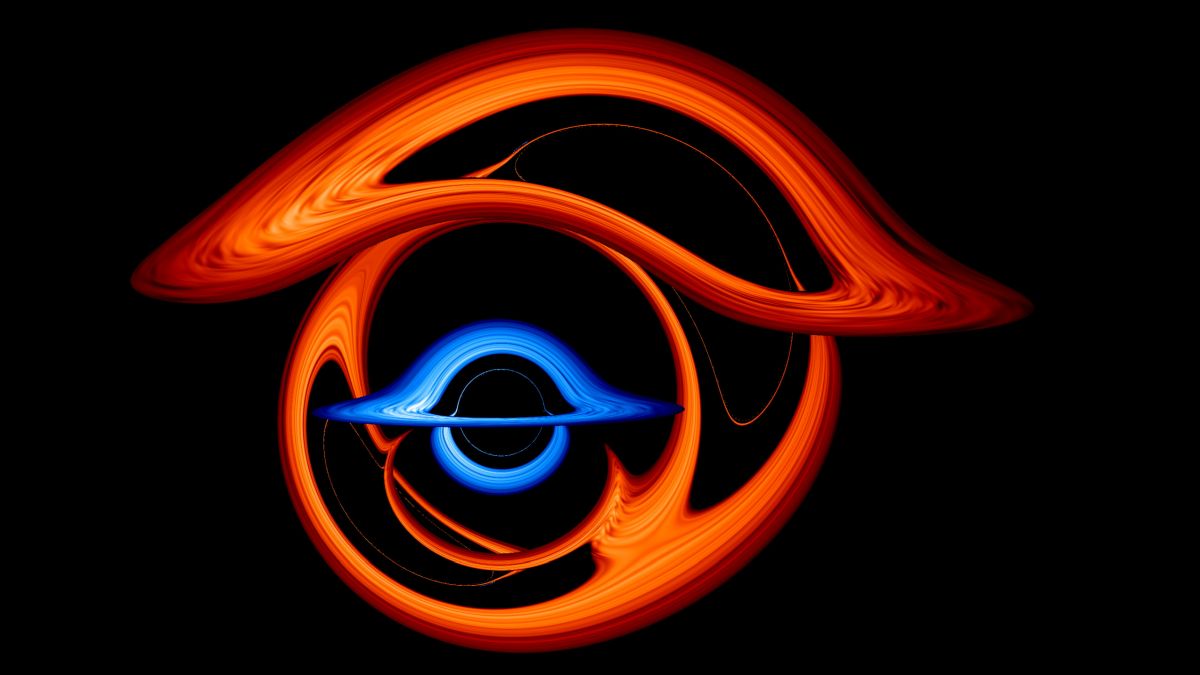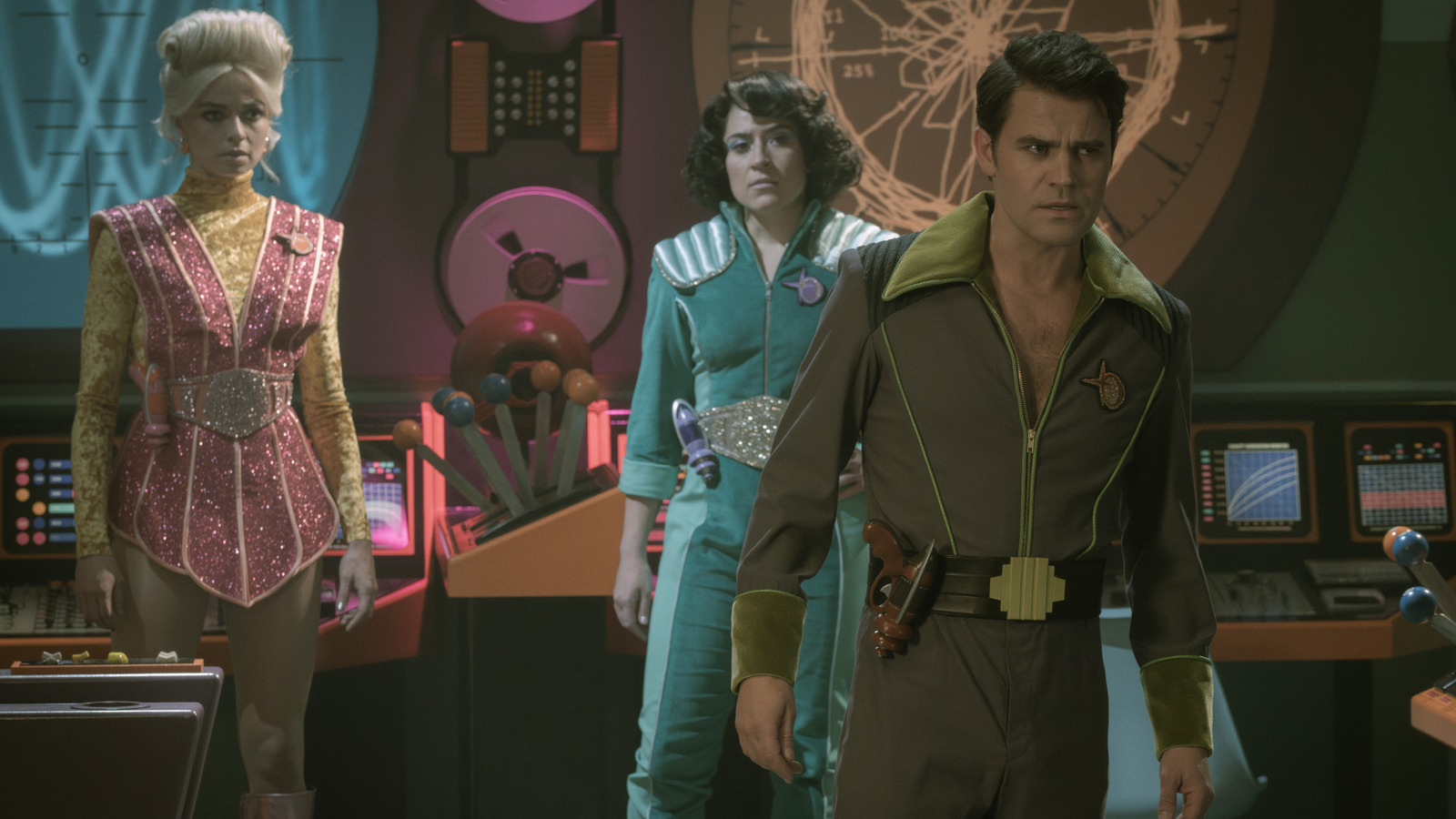The complex dance of two black holes locked in a doomed orbit has been revealed in a first-of-its-kind direct radio image.
It’s the first time astronomers have directly imaged the distinct jets of both black holes in a known binary – finally confirming the model of the double core of a galaxy called OJ 287.
In OJ 287, located some 3.5 billion light-years away, the intricate, extreme interplay between the two central supermassive black holes has been documented for decades. This is the first image to capture smoking-gun signatures of both objects, however.
Related: Astronomers Predict Astonishing Flare From Two Swirling Supermassive Black Holes
“For the first time, we managed to get an image of two black holes circling each other. In the image, the black holes are identified by the intense particle jets they emit,” says astronomer Mauri Valtonen of the University of Turku in Finland.
“The black holes themselves are perfectly black, but they can be detected by these particle jets or by the glowing gas surrounding the hole.”
OJ 287 is a type of galaxy called a quasar, which happen to be the brightest objects in the Universe. This brightness is powered by activity from the supermassive black hole in their galactic center, actively feeding from a huge disk of material. As it swirls around the black hole, this material is heated by friction and gravity to extreme temperatures, causing it to blaze with light.
However, OJ 287 is different from other quasars. As far back as 1982, astronomers noticed variability in its brightness, with a 12-year periodicity indicative of an orbiting companion to the central supermassive black hole, on a strange orbital path that periodically punches through the disk.
“What is special about OJ287 is that it has been thought to harbor not one but two black holes circling each other in a twelve-year orbit, which produces an easily recognizable pattern of light variations in the same period,” Valtonen says.
A few things can happen when black holes actively slurp up matter. One is the eruption of astrophysical jets, as material from the innermost rim of the disk, closest to the black hole, is diverted along magnetic field lines outside the event horizon. When it reaches the poles, this material is launched out into space at tremendous speeds.

Previous observations of OJ 287 revealed a vast jet erupting from the larger of the two black holes, an absolute unit clocking in at 18 billion times the mass of the Sun. However, the detection of a jet from the smaller of the two, at a more modest 150 million solar masses, remained elusive.
Astronomers have made many observations of OJ 287, the sharpest of which was obtained with a very long baseline interferometer, called RadioAstron, in 2014.
Working with Earth-based antennas, the space-based observatory achieved a record-breaking resolution, picking out structures 3.5 billion light-years away, equivalent to imaging a coin on the surface of the Moon. The researchers thought that if a jet from the smaller black hole were detected, it would appear in the RadioAstron data.
So, they went back to the RadioAstron map of the quasar’s light and identified several features associated with the astrophysical jet from a feeding black hole. They also calculated how the motion of the secondary black hole would change the path of its jet.
Because the secondary black hole is moving much faster relative to the primary, its jet should be twisted, like water coming from a rotating garden hose.
 frameborder=”0″ allow=”accelerometer; autoplay; clipboard-write; encrypted-media; gyroscope; picture-in-picture; web-share” referrerpolicy=”strict-origin-when-cross-origin” allowfullscreen>
frameborder=”0″ allow=”accelerometer; autoplay; clipboard-write; encrypted-media; gyroscope; picture-in-picture; web-share” referrerpolicy=”strict-origin-when-cross-origin” allowfullscreen>Finally, the researchers compared the RadioAstron map and the calculations of the secondary jet’s trajectory to previous models of binary black hole behavior. The results showed that one of the jet features in the map almost perfectly matched the theoretical predictions for the secondary black hole’s jet.
In the image, the main jet streams diagonally across the galactic core, while a fainter, angled streak matches the predicted path of the smaller black hole’s jet. In addition, the Doppler properties of the jets suggest that the secondary jet is moving more slowly, about half the speed of the primary jet.
This makes the RadioAstron images, obtained nearly a full decade ago, the first image evidence of two astrophysical jets, each erupting from a separate supermassive black hole.
The next step will be to verify the finding. Another radio map of OJ 287 is currently under construction; it may reveal some clues about the jet’s behavior. For further observations, however, we may have to wait for the 2030s, when the secondary jet becomes visible once again.
The team’s research has been published in The Astrophysical Journal.
First Appeared on
Source link











